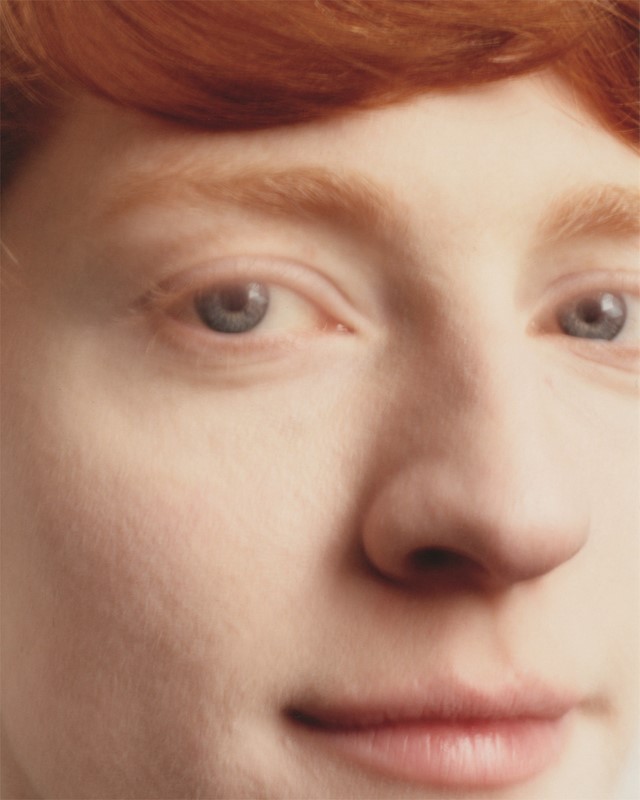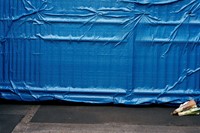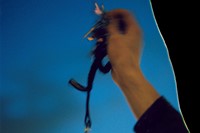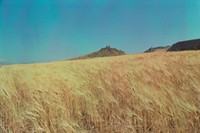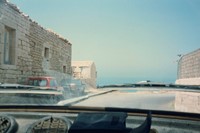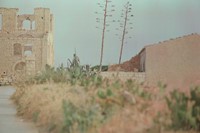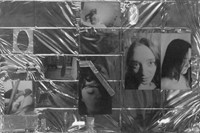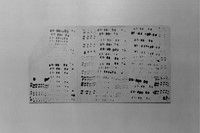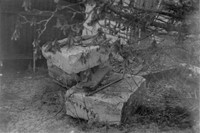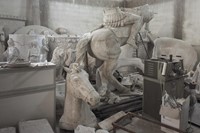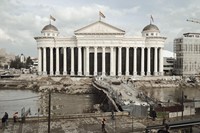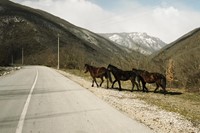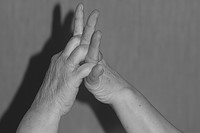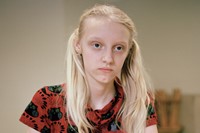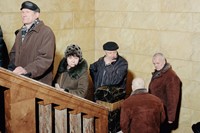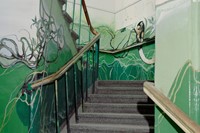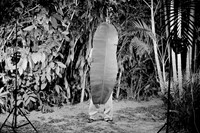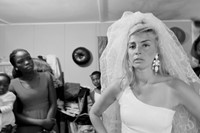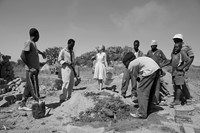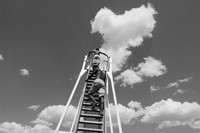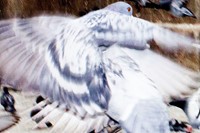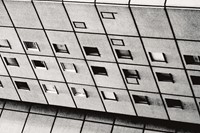Taking you through the shortlisted photographers of MACK’s First Book Award
Whether photographers look to understand the world or to imagine an alternative one, they are engaged with it. Their work informs new ways of thinking about ourselves, our families, and the wider world around us. Since 2011, photobook publishers MACK have helped find new ways of seeing and reading with their First Book Award, the prize for which sees MACK publish the winning book and exhibit its photography during Photo London. Past winners include Joanna Piotrowska’s enigmatic FROWST, and Hayahisa Tomiyasu’s gloriously mundane TTP. This year’s shortlist, selected for the time from an open call, has a strong focus on the personal and political relationships that will shape people for years to come. Before the winner is announced at this year’s Photo London, held at Somerset House, here are the ten shortlisted photographers.
1. Days by Alia Zapparova
The experience of time is hard to describe; when we’re gripped by emotions time can seem to fly, or drag along, achingly slowly. Spread across seven small booklets, Days presents Russian photographer Alia Zapparova’s contemplation on how to understand our daily rhythms. Setting the photographs in the everyday space of an empty flat, a space which “remains the same but is always lived in slightly differently from day to day”, she aims to capture “stillness by means of repetition”. Her grey-tinted palette lends these domestic scenes a sense of quietness and solitude, while her close observation of small details suggests a strong sense of familiarity.
2. June by Tereza Červeňová
On that fateful day in June 2016 when the UK voted to leave the European Union, Slovakian photographer Tereza Červeňová started chronicling her daily life. Over the past two years, June has looked at the UK via a sideways glance, turning away from the rallies and protests and towards evocative allegorical scenes to create “not only a record of daily events, but also a timeline of significant dates that will, or have already become, marker points in history”. Its pages bound together by a single golden ring, it emulates the fragile union, and allows the readers to shuffle the pages, assembling their own timeline.
3. Flattened in Time and Space by Angelo Vignali
Nostalgia is powerful, but so often it’s a longing for a time that we never knew. In Flattened in Time and Space Angelo Vignali turns to his extended family’s photo albums to reveal the character of his grandfather Concetto. These pictures, some by Vignali and others collected over 50 years, describe a life spent in the dusty hills of Sicily, the home that Concetto built with his own hands, and the love and dedication to this old man. But when our loved ones’ lives are reduced simply to piles of photographs and scattered memories will we ever truly know them?
4. E2-E4 by Jacob Clayton
For some, photography is a game. It has its players, it has rules and possibilities, it requires imagination and prediction. In E2-E4, Jacob Clayton draws out the surprisingly numerous parallels between chess and photography, bringing together 36 individual photographs of games, performances, and abstract experiments with dark-room chemicals, and numbering them like pieces on a chessboard. Inspired by the Japanese philosopher Nishida Kitaro and his theories of ‘nothingness’, Clayton sees photography as a game to be played and replayed infinitely, describing the book as, “stuck in a loop of potentialities, regressed to its beginning which was always its end”.
5. Alexander by Michał Siarek
Alexander captures history in the making as the Former Yugoslav Republic of North Macedonia tries to build a new national identity tied to the cultural legacy of its ancient antecedent, Alexander the Great. Michał Siarek contrasts contemporary rural poverty, vain public monuments, and rife corruption with the red-feathered plumes of historical reenactors, gleaming marble quarries, and nightclubs decorated with kitsch classical statues. Siarek offers a timely question of whether the truth of history has any bearing on the present, and given all of Europe claims a part of this classical legacy, Alexander reveals the fabrication of identity by all nations.
6. Czarna Madonna (Black Madonna) by Jagoda Wisniewska
Czarna Madonna (Black Madonna) began when Jagoda Wisniewska asked her grandmother to recall her own childhood. The book dwells on the feelings of discomfort and loss that can accompany relationships between mother and child, and reflects Wisniewska’s idea that photography is about “separation as much as it is about capturing a moment”. This idea of two distinct parts is carried on in her use of Polish and English, and her use of black and white as well as colour pictures. But this split between two ways of seeing and knowing the world seems to create a space for dialogue and, perhaps in time, reconciliation.
7. The Buzzer by Miguel Proença
Throughout the Baltic states, if you tune a radio to 4625 kHz, you’ll hear the unmistakable noise of a Russian military radio system, buzzing 24 hours a day, only occasionally interrupted by cryptic codewords. Miguel Proença took this station’s nickname for his own book, The Buzzer, which investigates the shifting sense of national identity among Russian minorities in the former-Soviet states of Estonia, Latvia and Lithuania. This is a region where propaganda, misinformation, and soft power continues to be exercised by all sides in an effort to retain control, yet differences in language and political allegiance cross borders and distort simple nationalities.
8. Oobanken by Jerome Ming
Jerome Ming draws on his experience of his “displaced and uprooted” life to present familiar objects in an unfamiliar place. Oobanken was made while Ming lived and worked in Myanmar, a country that was largely isolated from the outside world following its independence from Britain and still troubled by authoritarian rule. Early in life Ming found photographic interest in the actions we perform and the objects we construct, and he carries this interest into Oobanken, where his focus on the simple details – wooden bird cages, catapults, and banana leaves – tells a very different, more human story from a country so often seen only in the news.
9. 1972 by Rachel Monosov & Admire Kamudzengerere
In 1972, Rhodesia was on the brink of civil war and mixed-race marriage was all but banned. Rachel Monosov and Admire Kamudzengerere’s 1972 uses contemporary performances to imagine what it would have looked like to overcome the barriers that split lovers apart. Their simple black and white pictures have the air of a family photo album: together they lounge by a lake, hold hands at their wedding, and build their first house. These pictures exist somewhere between fantasy and reality – none of these pictures were staged, they actually were married – but with the simple changing of the date to 1972 they envisage a non-existent history.
10. Turunç by Solène Gün
Turunç, named after a Turkish fruit, is an exploration of the daily lives of young men with a Turkish background in the suburbs of Paris and Berlin. Solène Gün, herself a child of Turkish immigrants who has grown in the suburb of Paris, immerses herself in the daily life of young men in each of these cities. Her project focuses on themes of “fraternity, hope and solidarity”, bringing a sensitive and empathetic lens to people who are often burdened with negative stereotyping.
The winner of the MACK First Book Award will be announced on May 16, 2019.
